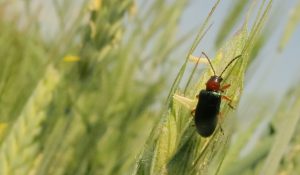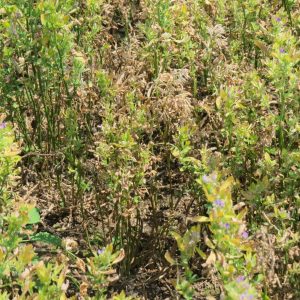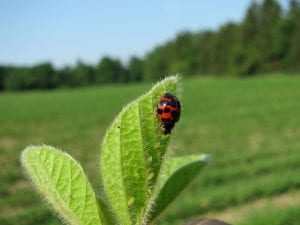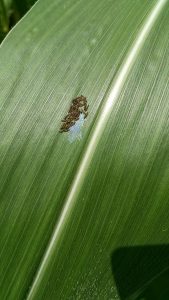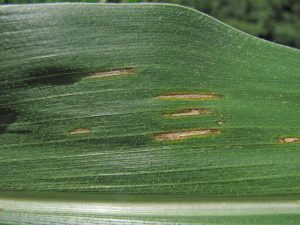Contents
New Online Pesticide Applicator Course for Credit: IPM for Insect Pest of Small Grains
We have a new online course for applicator credits. This course discusses integrated pest management for insect pests of small grains. It focuses on correct insect pest identification, lifecycles, and management strategies that can be employed.
https://pmepcourses.cce.cornell.edu/product?catalog=1689623724FsLF1
Potato leafhopper (Empoasca fabae)
Potato leafhopper in some parts of NYS is at high levels. Several fields were reported to be over the economic threshold. If you are within a week to ten days of the normal harvest it is best to cut the alfalfa to maintain yield and quality if over the threshold. If you are not and the alfalfa has not yet started to yellow, it is best to spray the field with an insecticide. It the alfalfa is still short and yellowing due to potato leafhopper it is best to clip the field and monitor the regrowth closely. It is time to get out and start scouting alfalfa fields.
For more information see below:
A Video on IPM for Potato Leafhopper in Alfalfa:
https://www.youtube.com/watch?v=8BIZYTq7Zec&list=PLE19BD8A62BE7D671&index=14&t=9s
Publication on Potato Leafhopper in Alfalfa:
https://cals.cornell.edu/field-crops/forages/insects-forage-crops/potato-leafhopper
Soybean Aphid (Aphis glycines)
There were some reports of soybean aphids over thresholds in fields. Remember soybean aphids have a lot of predators and parasitoids that control them. If a field is hanging around threshold with a lot of natural enemies monitor the field for 2 to 4 days to see if the population increases. If not, the natural enemies are doing their job. It is best to get out and scout.
The following is a guide on how to estimate the number of aphids on the plant by the University of Wisconsin: chrome- https://soybeanresearchinfo.com/wp-content/uploads/2019/03/aphid_visual.pdf
For more information view the following website:
https://cals.cornell.edu/field-crops/soybeans/insects-soybeans/soybean-aphid
Western bean cutworm (Striacosta albicosta)
Western bean cutworm (Striacosta albicosta) (WBC) is starting to increase in flight numbers. It is not at peak yet but will be approaching it soon. WBC lays eggs on corn just before pollination. It is best to target these fields when scouting. The economic threshold for WBC is an accumulated 5 percent of plants having egg masses or small larvae.
For more information view the following webpage: https://cals.cornell.edu/field-crops/corn/insects-corn/western-bean-cutworm
Slugs and Snails
Slugs and snails have been reported to be in soybean fields across the state. With the rain much of the state has received makes the conditions slugs and snails to proliferate. Generally, these do not do a lot of damage but in some cases molluscicide maybe needed.
For more information view the following webpage: https://extension.entm.purdue.edu/fieldcropsipm/insects/soybean-slugs.php
Gray leaf spot
Gray leaf spot has been found in some areas of the state.
“Symptoms of gray leaf spot are usually first noticed in the lower leaves. Initially, lesions of gray leaf spot begin as a small dot with a yellow halo. Lesions will elongate over time running parallel to the veins becoming pale brown to gray and rectangular in shape with blunt ends. These lesions can be described as having the appearance of a “matchstick.” Lesions may eventually coalesce killing the leaves. Leaves appear grayish in color due to the presence of fungal spore” Written by Dr. Gary Bergstrom (Gray Leaf Spot) Cornell University
For more information: https://cals.cornell.edu/field-crops/corn/diseases-corn/gray-leaf-spot#:~:text=Symptoms%20of%20gray%20leaf%20spot,in%20shape%20with%20blunt%20ends.


